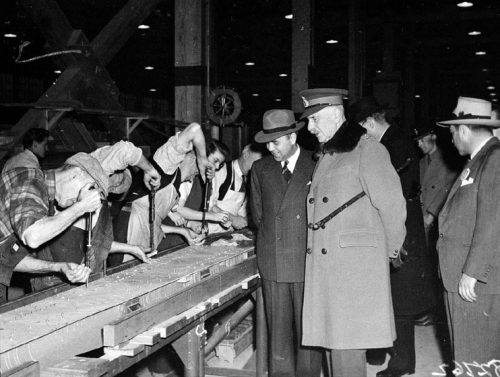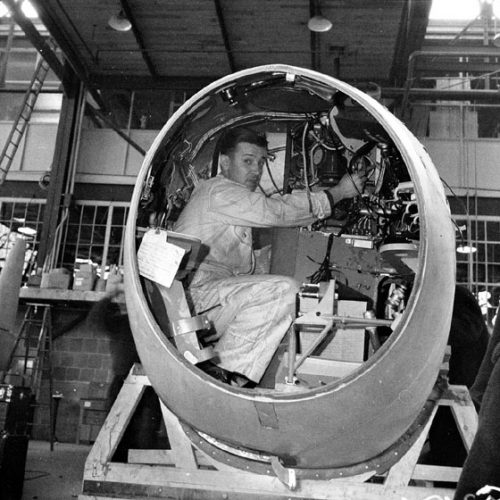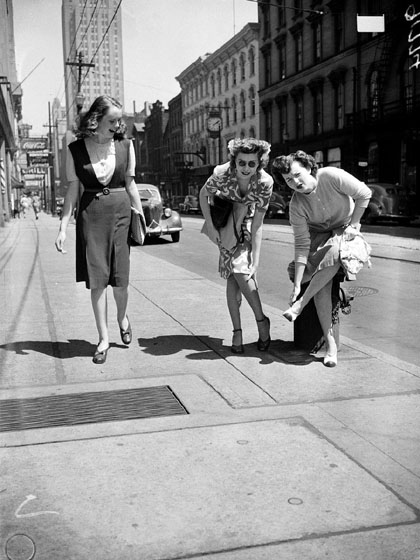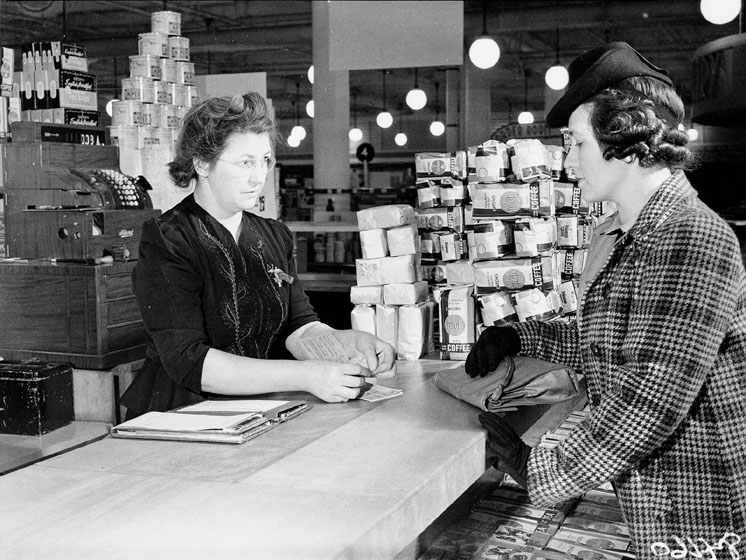
 World War II affected every Canadian civilian, every day. For almost six years, the war touched every aspect of life, from the foods and consumer goods available, to the vehicles seen on the streets, to the work men and women did, to the advertisements in the newspapers. Though the fighting took place on another continent, the “Home Front” in Canada gave everyone opportunities to contribute what they could. In 2005, the 60th anniversary of the end of World War II, we can look at these photographs, and remember.
World War II affected every Canadian civilian, every day. For almost six years, the war touched every aspect of life, from the foods and consumer goods available, to the vehicles seen on the streets, to the work men and women did, to the advertisements in the newspapers. Though the fighting took place on another continent, the “Home Front” in Canada gave everyone opportunities to contribute what they could. In 2005, the 60th anniversary of the end of World War II, we can look at these photographs, and remember.

Knitting was a popular way for civilians (including men and children as well as women) to directly and personally help the men and women overseas. Basic articles of clothing such as socks, scarves, and sweaters were always useful. The Red Cross also produced a booklet of patterns for specific uses, including mitts designed for those using rifles or radio equipment, caps to be worn under steel helmets, and amputation covers and bed socks for convalescents.




The Toronto area was a centre for war industries, including the construction of ships and planes, weapons, and munitions. Factories supported the war effort in additional ways, by holding Victory Bond rallies, providing land for victory gardens, and holding morale-building events such as dances, visits by celebrities, and Miss War Worker contests.


In 1943, Toronto experienced an extreme coal shortage. At the same time, Canada’s Fuel Controller requested that all Canadian homes be kept at 65º Fahrenheit (18.3º Celsius) to conserve fuel. The Globe and Mail ran a feature suggesting what to wear in a chilly house: woollen suits and dresses, trousers, jackets and shawls, and moccasins or knitted slippers. The shortage of wool and, particularly for children, shoes, was a further challenge.
